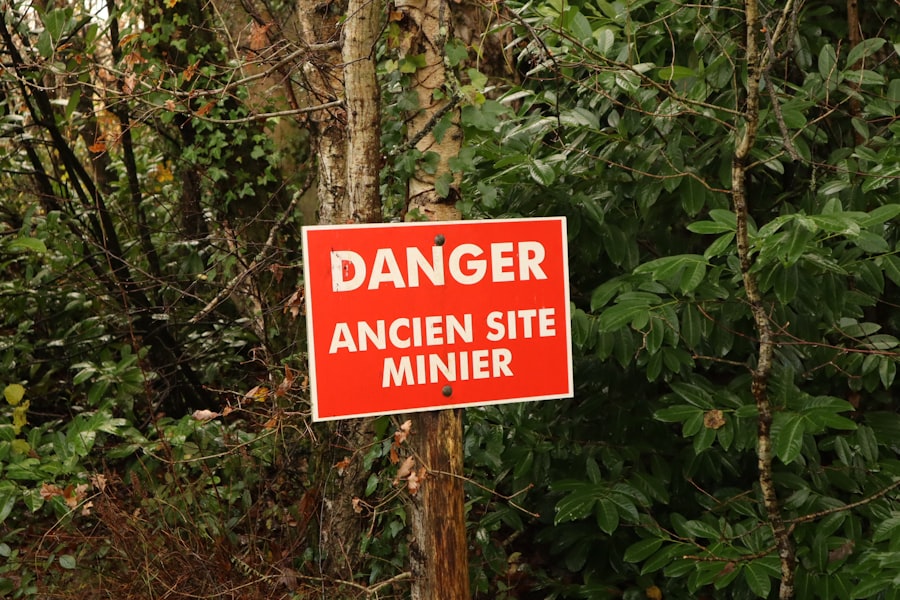The Drake Passage, a body of water situated between the southern tip of South America and Antarctica, is renowned for its tumultuous seas and significant geographical importance. Stretching approximately 800 kilometers (500 miles) wide, it serves as a critical conduit for ocean currents and plays a vital role in the global climate system. The passage is named after the English explorer Sir Francis Drake, who was one of the first Europeans to navigate these treacherous waters in the late 16th century.
The Drake Passage is not only a geographical marvel but also a gateway to one of the most remote and pristine regions on Earth. Navigating the Drake Passage is often considered a rite of passage for adventurers and researchers alike. The waters are notorious for their unpredictable weather patterns and rough seas, which can pose significant challenges to even the most seasoned mariners.
Despite these challenges, the passage attracts numerous vessels each year, ranging from research ships to luxury cruise liners, all eager to explore the wonders of Antarctica. The allure of the passage lies not only in its natural beauty but also in its rich history and the unique ecosystems it supports.
Key Takeaways
- The Drake Passage is a body of water between South America’s Cape Horn and the South Shetland Islands of Antarctica, known for its challenging sailing conditions.
- The Drake Passage has a rich historical significance as it was named after the English explorer Sir Francis Drake and has been a key route for explorers and sailors for centuries.
- The weather and climate conditions in the Drake Passage are characterized by strong winds, rough seas, and rapidly changing weather patterns, making it one of the most challenging maritime environments in the world.
- The Drake Passage is home to a diverse range of wildlife and marine life, including penguins, seals, whales, and various seabird species, making it a popular destination for wildlife enthusiasts and researchers.
- Navigating the Drake Passage poses significant challenges and hazards due to its unpredictable weather, strong currents, and potential for icebergs, requiring careful planning and seamanship skills.
Historical significance of the Drake Passage
The historical significance of the Drake Passage cannot be overstated. It has long been a critical route for explorers, scientists, and traders seeking to traverse between the Atlantic and Pacific Oceans. Sir Francis Drake’s circumnavigation of the globe in the late 1500s marked one of the first recorded passages through these waters, establishing the Drake Passage as a key maritime route.
His journey opened up new avenues for exploration and trade, paving the way for future expeditions to Antarctica and beyond.
The treacherous conditions have claimed many vessels over the centuries, leading to a rich tapestry of maritime lore and cautionary tales.
These historical events have contributed to the passage’s reputation as one of the most dangerous waterways in the world. The stories of shipwrecks and heroic rescues serve as reminders of the power of nature and the challenges faced by those who dare to navigate its waters.
Weather and climate conditions in the Drake Passage

The weather and climate conditions in the Drake Passage are notoriously volatile, characterized by strong winds, rapidly changing temperatures, and heavy precipitation. The convergence of cold Antarctic waters with warmer currents from the north creates a unique microclimate that can shift dramatically within hours. Mariners often find themselves contending with gale-force winds and towering waves that can reach heights of up to 15 meters (50 feet).
This unpredictability makes planning a journey through the passage particularly challenging. The region experiences a subpolar oceanic climate, with average temperatures ranging from -2°C (28°F) in winter to 8°C (46°F) in summer. However, these averages can be misleading, as sudden storms can plunge temperatures even lower.
The passage is also subject to frequent fog and low visibility, further complicating navigation. Understanding these weather patterns is crucial for anyone attempting to traverse this formidable stretch of water, as they can significantly impact both safety and travel plans.
Wildlife and marine life in the Drake Passage
| Category | Metrics |
|---|---|
| Whales | Several species of whales, including humpback, minke, and orca, can be found in the Drake Passage. |
| Penguins | Large colonies of penguins, such as the chinstrap, gentoo, and adelie, inhabit the islands and shores of the Drake Passage. |
| Seals | Fur seals and elephant seals are commonly spotted in the waters and on the shores of the Drake Passage. |
| Albatross | The Drake Passage is home to several species of albatross, including the wandering albatross, which has the largest wingspan of any bird. |
| Fish | The waters of the Drake Passage are rich in marine life, including various species of fish such as Antarctic toothfish and krill. |
The Drake Passage is home to an astonishing array of wildlife and marine life, making it a hotspot for biodiversity. The nutrient-rich waters support a thriving ecosystem that includes various species of fish, krill, and plankton, which in turn attract larger predators such as seals, whales, and seabirds. Among the most iconic inhabitants are the majestic humpback whales, orcas, and blue whales that migrate through these waters during feeding seasons.
Birdwatchers are also drawn to the passage, where they can observe albatrosses, petrels, and other seabirds soaring gracefully above the waves. The presence of such diverse marine life highlights the ecological importance of the Drake Passage. It serves as a critical feeding ground for many species that rely on its rich resources for survival.
Additionally, researchers are increasingly focused on studying these ecosystems to better understand their dynamics and how they may be affected by climate change. The unique combination of wildlife and marine habitats makes the Drake Passage not only a destination for adventure seekers but also a vital area for scientific research.
Navigation challenges and hazards in the Drake Passage
Navigating the Drake Passage presents numerous challenges and hazards that can test even the most experienced sailors. The unpredictable weather patterns can lead to sudden storms that create treacherous conditions at sea. Strong currents and shifting tides further complicate navigation, making it essential for mariners to possess a thorough understanding of local conditions.
Additionally, icebergs and sea ice can pose significant threats during certain times of the year, requiring careful planning and vigilance. The passage’s reputation for rough seas has led to many vessels encountering difficulties while traversing its waters. The combination of high winds, large swells, and limited visibility can create dangerous situations that demand quick decision-making and skilled seamanship.
As such, navigating the Drake Passage requires not only technical expertise but also an awareness of environmental factors that can change rapidly. Mariners must be prepared for any eventuality while maintaining a healthy respect for the power of nature.
Safety measures and precautions for navigating the Drake Passage

Given the inherent risks associated with navigating the Drake Passage, implementing safety measures and precautions is paramount for any voyage through these waters. Mariners are advised to conduct thorough pre-voyage planning that includes detailed weather assessments and route mapping. Utilizing advanced navigation technology such as GPS systems and radar can enhance situational awareness and help avoid potential hazards.
Additionally, vessels should be equipped with safety gear such as life rafts, emergency beacons, and first aid kits to ensure preparedness in case of emergencies. Crew training is equally important; all personnel should be familiar with emergency procedures and protocols for dealing with adverse conditions. Regular drills can help reinforce these skills and ensure that everyone on board knows how to respond effectively should challenges arise during their journey through the passage.
Popular routes and itineraries through the Drake Passage
The Drake Passage serves as a vital link for various popular routes and itineraries that connect South America with Antarctica. One of the most well-known journeys is from Ushuaia, Argentina—the southernmost city in the world—across the passage to various destinations on the Antarctic Peninsula. This route typically takes around two days to traverse, allowing travelers to experience both the excitement of crossing the passage and the breathtaking landscapes of Antarctica upon arrival.
Many cruise operators offer itineraries that include stops at iconic locations such as Deception Island, Paradise Bay, and Port Lockroy. These excursions provide opportunities for passengers to engage in activities like kayaking, wildlife watching, and even polar plunges into frigid waters. The combination of adventure and natural beauty makes these itineraries highly sought after by travelers looking to explore one of Earth’s last frontiers.
Tips for preparing for a journey through the Drake Passage
Preparing for a journey through the Drake Passage requires careful consideration and planning to ensure a safe and enjoyable experience. Travelers should begin by researching their chosen itinerary thoroughly, paying close attention to weather forecasts and potential sea conditions during their travel dates. Packing appropriate clothing is essential; layers are recommended to accommodate fluctuating temperatures, along with waterproof gear to stay dry during inclement weather.
In addition to clothing considerations, travelers should also focus on physical preparation. Engaging in regular exercise prior to departure can help build stamina for potential rough seas. It is also advisable to consult with a healthcare professional regarding any necessary vaccinations or medications that may be required for travel in this remote region.
Finally, maintaining an open mind about potential changes in plans due to weather or other factors will contribute positively to one’s overall experience.
Famous expeditions and explorations in the Drake Passage
Throughout history, numerous famous expeditions have traversed the Drake Passage, each contributing to our understanding of this remarkable region. One notable expedition was led by Ernest Shackleton during his ill-fated attempt to cross Antarctica in 1914-1916. His ship, Endurance, became trapped in pack ice within sight of land but ultimately became a tale of survival against all odds as Shackleton and his crew navigated back through treacherous waters after months adrift.
Another significant exploration was conducted by Charles Wilkes during his United States Exploring Expedition from 1838-1842. Wilkes’ voyage provided valuable scientific data about Antarctica’s geography and marine life while also mapping parts of its coastline. These expeditions not only advanced knowledge about this remote region but also inspired future generations of explorers drawn by its allure.
Impact of climate change on the Drake Passage
Climate change has begun to exert significant influence on the ecosystems within the Drake Passage, raising concerns among scientists about its long-term effects on marine life and global weather patterns. Rising ocean temperatures have been linked to shifts in species distribution as some marine organisms struggle to adapt or migrate in response to changing conditions. This phenomenon could disrupt established food webs within this delicate ecosystem.
Additionally, melting ice from Antarctica poses risks beyond just rising sea levels; it can alter ocean currents that flow through the Drake Passage itself. These changes may have far-reaching implications not only for local wildlife but also for global climate systems as interconnected oceanic processes are affected by alterations in temperature gradients or salinity levels. Understanding these impacts is crucial for developing strategies aimed at mitigating climate change’s effects on this vital region.
Future developments and advancements in navigating the Drake Passage
As technology continues to advance at an unprecedented pace, future developments in navigation techniques may enhance safety measures within the challenging environment of the Drake Passage. Innovations such as autonomous vessels equipped with sophisticated sensors could revolutionize how ships traverse these waters by providing real-time data on weather conditions and potential hazards. Furthermore, ongoing research into climate change’s impact on ocean currents may lead to improved predictive models that help mariners better anticipate shifts in weather patterns or sea conditions before embarking on their journeys through this formidable passage.
As our understanding deepens regarding both environmental changes and technological advancements, navigating the Drake Passage may become safer while still preserving its allure as one of Earth’s last great frontiers for exploration.
The Drake Passage is renowned for its treacherous waters, often considered one of the most dangerous sea passages in the world due to its unpredictable weather and strong currents. For those interested in learning more about the challenges and dangers associated with navigating this infamous stretch of water, a related article can be found on MyGeoQuest. This article delves into the geographical and historical significance of the Drake Passage, providing insights into why it poses such a formidable challenge to sailors and explorers. You can read more about it by visiting this link.
WATCH NOW! Drake Passage: Earth’s Deadliest Waters Revealed
FAQs
What is Drake Passage?
Drake Passage is the body of water between the southern tip of South America and the northern tip of the Antarctic Peninsula. It connects the Atlantic and Pacific Oceans.
How dangerous is Drake Passage?
Drake Passage is known for its rough seas and strong winds, making it one of the most treacherous stretches of water in the world. The combination of strong currents and unpredictable weather patterns can create challenging conditions for ships crossing the passage.
Are there any safety measures in place for crossing Drake Passage?
Ships crossing Drake Passage are equipped with experienced crew members and modern navigation and safety equipment to mitigate the risks associated with the passage. Many cruise ships and research vessels regularly navigate the passage with the necessary precautions in place.
Are there any alternatives to crossing Drake Passage?
While Drake Passage is the most direct route between South America and Antarctica, there are alternative routes that involve longer travel times but may offer calmer seas. These alternative routes often involve traveling around the southern tip of South America or flying to Antarctica.
What should travelers consider before crossing Drake Passage?
Travelers considering crossing Drake Passage should be aware of the potential for rough seas and prepare accordingly. It is advisable to consult with experienced travel professionals and consider the potential for seasickness and motion discomfort.
